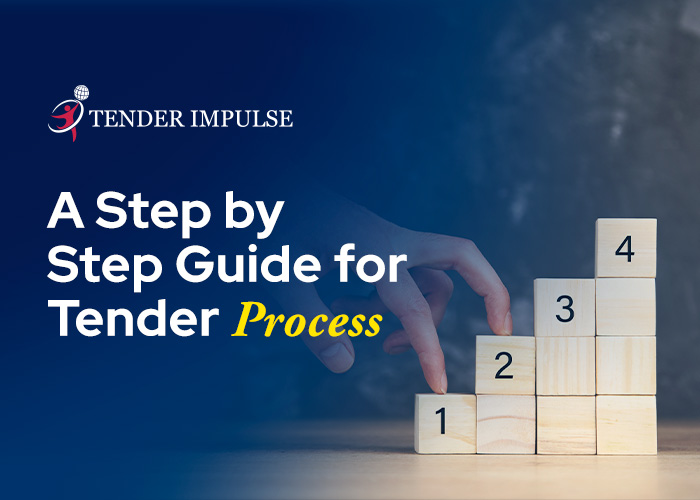- Phone: +91 9768157682 / +91 9987300609
- Email: info@tenderimpulse.com

Tender Process: A Step by Step Guide
Tender Process: A Step by Step Guide
Companies that look to participate in public tenders or business tenders must be aware of key elements involved in a tendering process. Typically, there are five stages of a public procurement contract. The entire process is described below:
1. Publication of Tender:
- The government organization publishes a detailed document outlining the requirements, specifications, terms, and conditions of the procurement. This document is often referred to as a Request for Tender (RFT) or Invitation to Tender (ITT). This is also termed as a tender notice or a contract notice. Depending on the geography of where the tender is released there are different terms used. There are aggregator services that can fetch tender information from different parts of the world and service companies to provide a procurement digest that may act as a lead generation tool.
- Tenders may be published through various channels, including government websites, official gazettes, and specialized public procurement platforms. Tenders are also published in local newspapers where electronic procurement is not very prevalent. Most of the countries in the world however have resorted to e-procurement and have a dedicated portal for informing companies about the tenders that they publish. Some of the authorities choose to have their own procurement portal rather than a centralized one. Apart from these government portals, tenders are also published on the unilateral and multilateral funding agencies such as UNDP, United Nations, Asian Development bank etc.
2. Bidding Process:
- Interested suppliers or contractors review the tender documentation and prepare their bids in accordance with the specified requirements. Usually, this process happens on the authority’ website or through the centralized procurement portals. However, some authorities may also choose to have an offline mode for submission of bids. In such cases, companies or interested parties must physically visit the location and submit their bid in the authority’s offices.
- Bids usually include details about the company, proposed solution, pricing, and any other information requested in the tender document. Bids may also contain the major reasons why the authorities must choose the company and compel them to choose their business for provision of aforementioned tender process. In a typical structured setting, authorities set out the most important tasks that they look out for in the bids to receive and only highlight that part while evaluating a bid.
3. Submission of Bids:
- Bidders submit their proposals within the specified deadline and failure to do so may result in disqualification of the supplier.
- Submissions may be electronic or physical, depending on the requirements outlined in the tender document. Depending on the submission type, businesses can participate in these bids. For electronic bids, businesses must provide complete details of registration while for offline bids users may choose to send representatives to bid in the tenders.
4. Bid Evaluation:
- The government organization evaluates the submitted bids based on predefined criteria, which may include technical specifications, price, delivery schedule, and other relevant factors. Sometimes, tendering authorities highlight the most important aspect of the bid on which the evaluation is made such as price, proximity to tendering location etc while in some cases the authorities do not have such reservations. It is up to the companies to look out for such parameters if any in the bidding documents/notices released by the authorities.
- Evaluation panels or committees are often established to assess the bids objectively. Processes are generally transparent and award information is also published by some authorities about the tenders that have been awarded.
5. Contract Award:
- After the evaluation process, the government organization awards the contract to the successful bidder whose proposal best meets the specified criteria. Information on the contract awarded such as the winning company’s name, contact details etc are also set out by certain authorities thus making the tendering processes transparent to everybody who bids in the tender.
- The award decision is typically communicated to all bidders, and the winning bidder enters into a contractual agreement with the government entity.
Government tenders aim to ensure fair competition, transparency, and value for money in the procurement process. They play a crucial role in allowing businesses, including small and medium enterprises, to participate in government projects and contribute to public sector initiatives. A business may use external service providers to gain such information regularly and have a lead generation tool focussed on doing business with government authorities worldwide. With a portal like Tender Impulse, companies can rely on intuitive, insightful and timely information that could boost their business development and take them to another level in their business journey.



